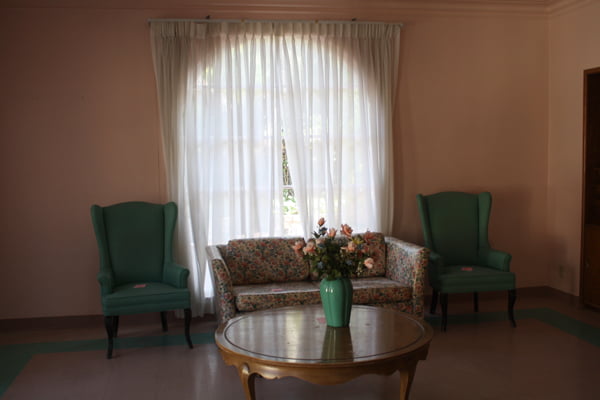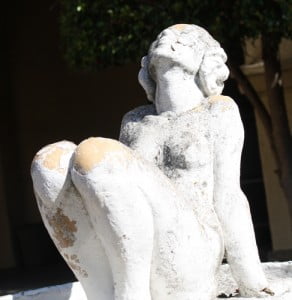
City officials continue to find treasures left behind at Rockhaven
By Mary O’KEEFE
The future of Rockhaven Sanitarium is moving slowly but surely toward a final decision of what will be the organization or organizations that will call the historical location home.
“We are now reviewing a draft report by a historical architectural consulting firm,” said Glendale Assistant City Manager Bob McFall.
The city hired the architectural firm to research and analyze the property keeping in mind not only the historical significance of the buildings but the deep ties the location has to the community.
“We recognize the value and importance of this site,” McFall said.
Rockhaven was established in 1923 by Agnes Richards, a young nurse who was appalled at the treatment of mentally ill women. Rockhaven began with one building and six women. It expanded over the years and became a peaceful and secluded place of treatment serving many women. The facility remained under the family’s leadership until it was sold in 2004 to a convalescent company. In 2008 it was purchased by the city of Glendale, and since then city employees, led by McFall, have gone through a methodical and careful cataloging of the property and the items left behind.

Glendale City Council member John Drayman was instrumental in bringing Rockhaven to the city council and giving voice to the community that wanted to save the historical location. “Thank goodness for the vision of John Drayman,” Mc Fall said.
In his capacity as city manager, McFall helped organize and catalog the buildings but it has become more than a job – it is now a passion.
Stepping through the door of each residence, it is like walking into a place frozen in time. Watching McFall, it was apparent he is not just categorizing the items the women left behind but is handling each item with respect.
“We walked into this room and found the bed made and a Mother’s Day card sitting up on the center of the bed,” he said. The number of items found has at times surprised him. “It is eerie sometimes walking into these rooms and finding things just left behind.”
McFall and city workers have found everything from fur coats to personal papers. He has tried to research the background of those who left their lives behind but have not found many answers.
One glaring consistency of the Rockhaven property is the level of care for the details in every building. The tiles in each bathroom have a similar design, the wall paper is flowered, the draperies gently dust the floor and the rooms have a peaceful feel.
McFall said after the review of the architect’s report, the city will conduct community meetings concerning what residents feel should occupy Rockhaven’s buildings.
The city is taking its time to do right by Rockhaven and not rushing through any part of the future planning, he said. “We are keeping our minds very open.”
Next week a closer look into these buildings and those who called Rockhaven home.
